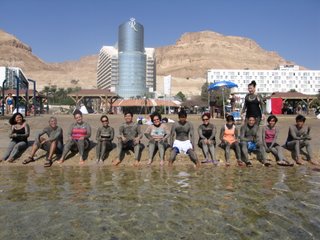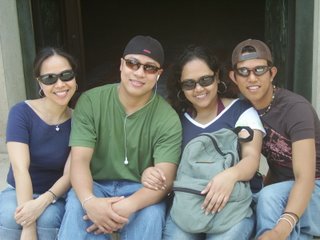 Woooooowwwwwwww........................... I love this picture. Nothing to say,just look and smile as you see......
Woooooowwwwwwww........................... I love this picture. Nothing to say,just look and smile as you see......
Wednesday, October 11, 2006
" A FRIENDS OF MY ..."
A SIGN OF EMERGING ROMANTIC FEELINGS
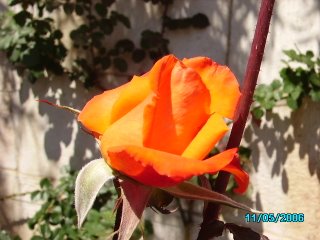 The orange rose has become the perfect way to symbolize the heat of passion, burning desire and the flames of love.Orange roses have a power to send a message of romance that can rival even the red rose!Hmmmmmmm.....I think I'm inlove...Ha! Ha! Ha!
The orange rose has become the perfect way to symbolize the heat of passion, burning desire and the flames of love.Orange roses have a power to send a message of romance that can rival even the red rose!Hmmmmmmm.....I think I'm inlove...Ha! Ha! Ha!
"O SON OF EARTH"
Sunday, October 08, 2006
"THE LOWEST ELEVETION ON EARTH"
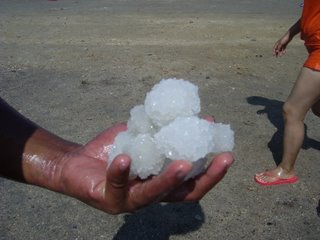 Location: The Dead Sea is located in the Middle East, between Jordan and Israel.
Location: The Dead Sea is located in the Middle East, between Jordan and Israel.It's called the Dead Sea because nothing lives in it but with tons of tons of crystal formation of salt(mineral salt). It is some of the saltiest water anywhere in the world, almost six times as salty as the ocean! The Dead Sea is completely landlocked and it gets saltier with increasing depth.
Facts: The surface of the Dead Sea is over 1,300 feet below sea level. The very bottom of the sea, in the deepest part, is over 2,300 feet below sea level. The Dead Sea has some of the most saline water on earth; as much as 35% of the water is dissolved salts!
Friday, October 06, 2006
"NAZARETH CITY"
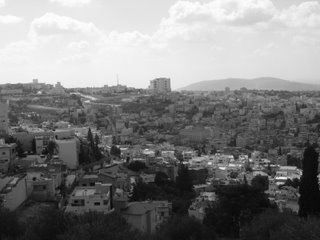 Nazareth City
Nazareth CityThe site where Nazareth exists today was founded and settled between 600-900 BCE. Nazareth is located between the open space of the Jezreel valley and the mountainous regions of Galilee. Nazareth is also 60 miles north of Jerusalem and midway between the Mediterranean and Galilean seas. Before Jesus’ time great battles had taken place in the valley that is seen from Nazareth. The Jezreel as it is seen from the town, is a natural battlefield. The villages and farms in the at the time of Jesus consisted of walled terraces, watch towers, and rock quarries. The village was surrounded be vineyards, olive grooves, and terraced crops, that might have inspired some of Jesus’ parables. Nazareth was isolated however because no trade routes ran through the city.
Nazareth is in the central area of Galilee and is surrounded by numerous sites of international historical and archeological importance, such as Cana of Galilee, Sephoris, Mount Tabor, the Mount of the Precipice, Tiberias, Capernaum amongst others. The heart of Nazareth today is the Old City, which is comprised of two parts: the nucleus - the historical and religious core - and the ``casing" - the markets, mansions, and houses on the slope of the Nebi Sa'in Ridge. Nazareth is now the largest Arab city in Israel with a population of, half Christians, half Moslems. These groups live together in a peaceful harmony coexisting with each other.
"THE MASADA"
Masada is one of the National Park of Israel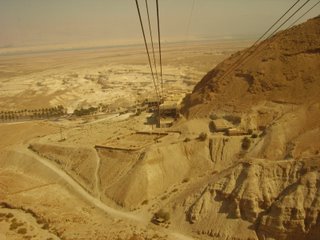 Masada is a rugged natural fortress, of majestic beauty, in the Judaean Desert overlooking the Dead Sea. It is a symbol of the ancient kingdom of Israel, its violent destruction and the last stand of Jewish patriots in the face of the Roman army, in 73 A.D. It was built as a palace complex, in the classic style of the early Roman Empire, by Herod the Great, King of Judaea, (reigned 37 – 4 B.C.). The camps, fortifications and attack ramp that encircle the monument constitute the most complete Roman siege works surviving to the present day.
Masada is a rugged natural fortress, of majestic beauty, in the Judaean Desert overlooking the Dead Sea. It is a symbol of the ancient kingdom of Israel, its violent destruction and the last stand of Jewish patriots in the face of the Roman army, in 73 A.D. It was built as a palace complex, in the classic style of the early Roman Empire, by Herod the Great, King of Judaea, (reigned 37 – 4 B.C.). The camps, fortifications and attack ramp that encircle the monument constitute the most complete Roman siege works surviving to the present day.
Criterion iii Masada is a symbol of the ancient Jewish kingdom of Israel, of its violent destruction in the later 1st century CE, and of the subsequent Diaspora. Criterion iv The palace of Herod the Great at Masada is an outstanding example of a luxurious villa of the Early Roman Empire, whilst the camps and other fortifications that encircle the monument constitute the finest and most complete Roman siege works to have survived to the present day. Criterion vi The tragic events during the last days of the Jewish refugees who occupied the fortress and palace of Masada make it a symbol both of Jewish cultural identity and, more universally, of the continuing human struggle between oppression and liberty.
 Masada is a rugged natural fortress, of majestic beauty, in the Judaean Desert overlooking the Dead Sea. It is a symbol of the ancient kingdom of Israel, its violent destruction and the last stand of Jewish patriots in the face of the Roman army, in 73 A.D. It was built as a palace complex, in the classic style of the early Roman Empire, by Herod the Great, King of Judaea, (reigned 37 – 4 B.C.). The camps, fortifications and attack ramp that encircle the monument constitute the most complete Roman siege works surviving to the present day.
Masada is a rugged natural fortress, of majestic beauty, in the Judaean Desert overlooking the Dead Sea. It is a symbol of the ancient kingdom of Israel, its violent destruction and the last stand of Jewish patriots in the face of the Roman army, in 73 A.D. It was built as a palace complex, in the classic style of the early Roman Empire, by Herod the Great, King of Judaea, (reigned 37 – 4 B.C.). The camps, fortifications and attack ramp that encircle the monument constitute the most complete Roman siege works surviving to the present day.Criterion iii Masada is a symbol of the ancient Jewish kingdom of Israel, of its violent destruction in the later 1st century CE, and of the subsequent Diaspora. Criterion iv The palace of Herod the Great at Masada is an outstanding example of a luxurious villa of the Early Roman Empire, whilst the camps and other fortifications that encircle the monument constitute the finest and most complete Roman siege works to have survived to the present day. Criterion vi The tragic events during the last days of the Jewish refugees who occupied the fortress and palace of Masada make it a symbol both of Jewish cultural identity and, more universally, of the continuing human struggle between oppression and liberty.
Subscribe to:
Posts (Atom)
